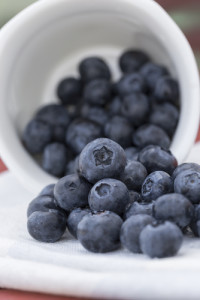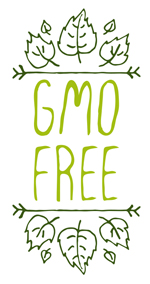With my disappointment about genetically engineered salmon being pushed to be approved for food (and a slew of other disappointing news about food regulations), I wanted to shift gears into thinking of more positive ways of eating and revisiting the ways to eat more sustainably. Although you probably know most of it, I figured, it wouldn’t hurt to check the list again.
Listen to my conversation with Green Diva Meg in this Green Divas Foodie-Philes for more ideas on eating sustainably.
25 WAYS TO EAT SUSTAINABLY:
- Use the WHOLE vegetable – the stalk, leaves, the whole kit and kaboodle.
- Get to the root – buy loose vegetables and not the factory ‘boxed’ kinds.
- Be a farmers’ market regular and get staples – onions, potatoes, herbs, etc. that you always
 use and need
use and need - Buy Heirloom – def. of heirloom – crop from seeds that have been passed down for generations, grown in small crops that may restore the health of the soil. I think this is so much healthier for us and the planet, don’t you think?
- Stock up – buy in bulk when in season and freeze, pickle or preserve it. Use BPA free glass storage containers
to store food and avoid plastics.
- Get advice – for recipes from farmers
- Challenge yourself – use up week’s worth of meal.
- Local is always the priority. If you can’t buy local, buy organic.
- Buy local eggs – with recent recalls of millions of factory eggs due to Salmonella outbreak, need I say more?
- Use your basement to keep your hardy vegetables – like squash, sweet potatoes, beets, turnips, and rutabagas. They will keep up to six months in temperatures 40∘F or below. Store them as close to the time they were harvested as possible – preferably unwashed, green tops will attached and packed in sawdust or moist peat moss.
- Get farm-fresh food delivered – CSA. If you can’t use up one portion, go in on it with a friend of a neighbor.
[bctt tweet=”Great tips for eating more sustainably by @drkarenslee 4 #GreenDivas #FoodiePhiles “] - Be packaged conscious – when buying food from the supermarket, be conscientious of packaging. Buy loose and no packaging when possible. Recycled or recyclable next.
- Buy organic milk – Not all organic milks are created equal. Check your brand at sustainable.org and opt for antibiotic and rBGH-free (no artificial bovine growth hormones)
- Use unprocessed grains. – Go for brown rice, barley, quinoa or farro. they are healthier for you too. Better yet, go for buckwheat as they can improve soil quality. (Of course, be mindful of arsenic levels and go for brands that have lower levels.)
- Cook with dry beans – buy dry beans, soak them overnight. You’ll cut cooking time, save
 money, and energy usage in half!
money, and energy usage in half! - Read labels. Don’t buy any packaged foods that have more than five ingredients or ingredients you cannot pronounce, nothing artificial, and no cartoons on the package.
- Freeze organic berries – when they are in season. Berries are on top of the organic foods to
buy list. Buy them when they are in season and freeze them to have in the winter. - Make your own seltzer – Buy a soda stream
machine and make your own seltzer to avoid all the chemicals that are in commercial sodas. It is great for keeping soda bottles out of the landfill and making delicious fruit spritzers.
- Buy local bread – buy bread from your local bakery or farmers market. It comes without packaging, it will be fresher, and the chances are, it will have fewer ingredients.
- Make homemade breadcrumbs and croutons. Why buy packaged ones when you can make them with stale bread so easily by baking them and making them into crumbs or croutons yourself?
- Read PLU codes – PLU is an international Price Look Up system for labeling produce. It’s a lot more complicated than I’d (or you’d) want to know but just remember; any item with PLU codes starting with ‘9’ is organic, ‘4’ is conventional, ‘3’ is local, and ‘8’ is GMO.

- Become friends with local growers and fishermen so you can find out what’s being picked or caught. You’ll know where your food comes from. I know my fish monger, grass fed and finished meat rancher, and organic herb grower at the farmers market.
- Cut out processed corn. THIS is a biggie. Avoid buying items with corn or corn-based substances (corn oil, cornstarch, or corn syrup) as ingredients. According to the USDA, at least 85 percent of the corn grown in this country has been genetically modified, meaning the plants were altered to make them more pest resistant.
- Eat more REAL corn. Ask your farmer if he uses GMO corn seeds (or from Monsanto’s roundup seeds).
- Wash vegetables submerged in a basin with vinegar and water for ten minutes. It’ll clean any thing that you don’t want to ingest. And I’ll leave you at that but inegar and water soak WORKS! You don’t need any fancy fruit washes.
images via shutterstock
This post was adapted from the original post on DrKarenSLee.com
 Dr. Karen Lee is a retired Chiropractor, publisher of drkarenslee.com, co-founder & partner of Green Sisterhood. She believes being a mom made her into a better doctor, researcher, and an advocate for wholistic health. She consults clients on clean living using holistic approach, everything from foods they eat to environment they live in. When she’s not consulting clients or writing about health, she’s developing healthy recipes for her family or cuddling up with her lapdog with a book.
Dr. Karen Lee is a retired Chiropractor, publisher of drkarenslee.com, co-founder & partner of Green Sisterhood. She believes being a mom made her into a better doctor, researcher, and an advocate for wholistic health. She consults clients on clean living using holistic approach, everything from foods they eat to environment they live in. When she’s not consulting clients or writing about health, she’s developing healthy recipes for her family or cuddling up with her lapdog with a book.